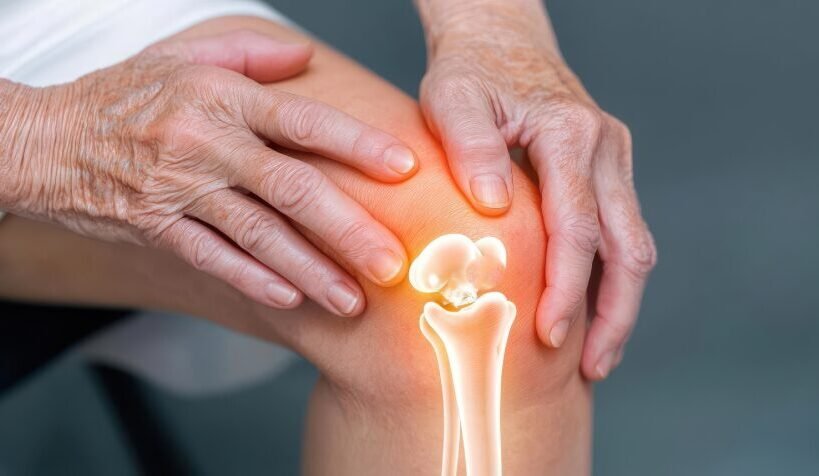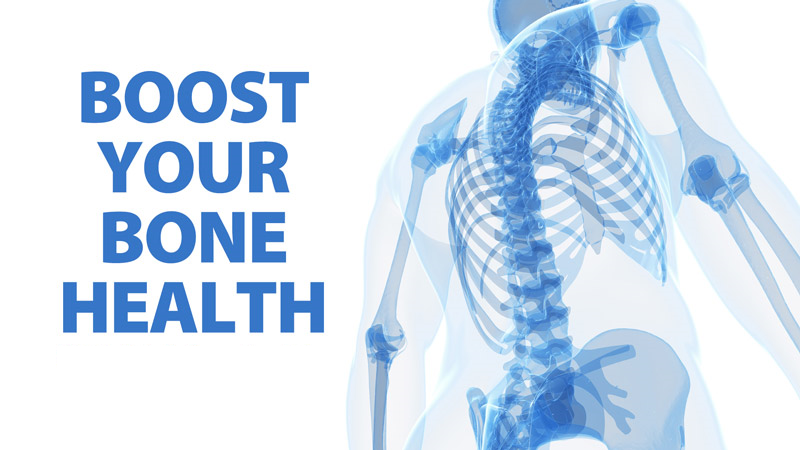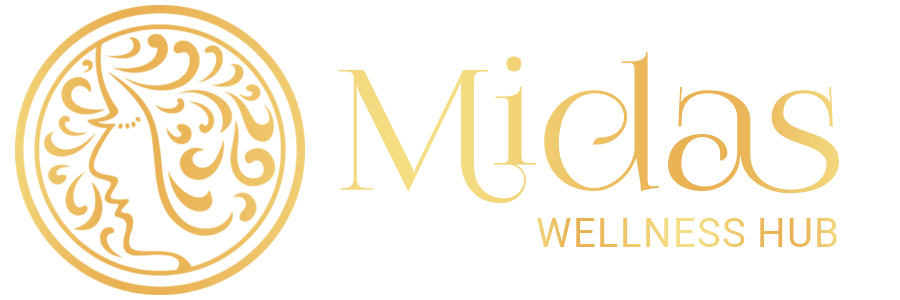
Vitamin D: The Key to Reducing Fracture Risk in the Elderly

Vitamin D: The Key to Reducing Fracture Risk in the Elderly

As we age, maintaining strong bones becomes one of the most critical aspects of overall health. Fractures, especially hip and spine fractures, can be life-altering for elderly individuals, often leading to prolonged recovery, loss of mobility, and a reduced quality of life. While calcium has long been recognized as a major factor for bone strength, research now highlights another crucial player: Vitamin D.
At Midas Wellness Hub, we emphasize that maintaining healthy Vitamin D levels is not just about bone density, it’s about preserving independence, reducing risk of falls, and supporting overall vitality in later years. Let’s explore how this “sunshine vitamin” plays a vital role in reducing fracture risks in the elderly, the science behind it, and how to maintain healthy levels naturally and safely.
Understanding Vitamin D and Its Role in Bone Health

Vitamin D is a fat-soluble vitamin that acts more like a hormone than a nutrient. Once produced in the skin from sunlight or consumed through food and supplements, it undergoes conversion in the liver and kidneys to its active form, calcitriol. This active form regulates calcium and phosphorus balance in the blood, two minerals essential for bone formation and maintenance.
Without adequate Vitamin D, your body cannot absorb calcium efficiently from the gut, leading to bone loss, increased fragility, and higher susceptibility to fractures.
For the elderly, this becomes even more critical because:
- The skin’s ability to synthesize Vitamin D from sunlight decreases with age.
- Dietary intake tends to reduce due to poor appetite or restricted diets.
- Mobility issues may limit outdoor exposure to sunlight.
- Certain chronic diseases or medications interfere with Vitamin D metabolism.
All of these factors make Vitamin D deficiency a silent epidemic among the elderly, and a key reason for increased bone-related problems.
How Vitamin D Deficiency Increases Fracture Risk
Several studies have shown a strong link between low Vitamin D levels and a higher incidence of fractures in older adults. Here’s why:
1. Reduced Bone Mineral Density (BMD)
Vitamin D supports calcium absorption in the intestines. When levels are low, calcium absorption drops dramatically, forcing the body to draw calcium from bones to maintain blood levels. Over time, this leads to bone demineralization, osteoporosis, and increased fragility.
2. Muscle Weakness and Poor Balance
Vitamin D also influences muscle function. Deficiency leads to muscle weakness, particularly in the lower limbs, which increases the risk of falls, one of the leading causes of fractures among the elderly.
3. Delayed Bone Repair
Vitamin D deficiency can impair bone remodeling and healing. After a fracture, bones need sufficient Vitamin D to stimulate the cells that rebuild and strengthen tissue. Low levels may delay recovery and lead to complications.
4. Increased Risk of Falls
Meta-analyses have found that elderly individuals with low Vitamin D levels have poorer postural stability, slower reflexes, and weaker grip strength, all of which contribute to higher fall risks.
Scientific Evidence: Vitamin D and Fracture Prevention
Multiple large-scale studies and reviews confirm the role of Vitamin D supplementation in reducing fracture risks:
- A landmark meta-analysis published in The New England Journal of Medicine found that Vitamin D supplementation (700–1000 IU/day) reduced the risk of hip fractures by up to 26% and non-vertebral fractures by 23% in older adults.
- Research from The Journal of Bone and Mineral Research highlighted that maintaining serum 25(OH)D levels above 30 ng/mL significantly lowers fall and fracture risk.
- Another study involving elderly women in nursing homes showed that combined supplementation of Vitamin D and calcium reduced fracture incidence compared to calcium alone.
- This growing body of evidence underlines one thing: Vitamin D is not just supportive, it’s essential for fracture prevention and long-term bone strength.
Vitamin D and Calcium: The Perfect Partnership

Calcium and Vitamin D work hand in hand. Calcium provides the raw material for bone structure, while Vitamin D ensures that calcium is properly absorbed and utilized. Without adequate Vitamin D, even a calcium-rich diet won’t protect bones effectively.
The optimal combination is therefore:
- Vitamin D intake (700–2000 IU/day depending on age and deficiency level)
- Calcium intake (1000–1200 mg/day for older adults)
- Magnesium and Vitamin K2 also play supportive roles in directing calcium to bones rather than soft tissues.
At Midas Wellness Hub, our experts often recommend personalized nutritional plans or supplements tailored to your blood test reports, ensuring a safe and effective balance for bone health.
Sources of Vitamin D
1. Sunlight Exposure
The most natural source is sunlight. When UVB rays hit the skin, they trigger Vitamin D synthesis. However, elderly individuals often get insufficient exposure due to limited mobility, sunscreen use, or spending most time indoors.
Ideally, about 15–20 minutes of sun exposure (without sunscreen) on arms and legs 3–4 times a week can help, but this depends on skin type, location, and weather.
2. Dietary Sources
Few foods naturally contain Vitamin D, but incorporating the following can help:
- Fatty fish like salmon, sardines, mackerel, and tuna
- Fortified dairy products, orange juice, and cereals
- Egg yolks
- Mushrooms exposed to sunlight
3. Supplements
For elderly individuals with limited sun exposure or dietary intake, supplementation becomes essential. Vitamin D3 (cholecalciferol) is preferred over D2 as it’s more potent and effective in raising blood levels.
However, supplements should be taken under medical guidance, since excessive intake can lead to toxicity and elevated calcium levels in the blood.
Recognizing Vitamin D Deficiency in the Elderly
Deficiency can be subtle and easily overlooked. Common signs include:
- Fatigue and low energy
- Muscle pain or weakness
- Bone pain, particularly in the hips and lower back
- Frequent falls or balance issues
- Slow recovery from fractures
A simple blood test for 25(OH)D can determine Vitamin D status.
- Deficient: <20 ng/mL
- Insufficient: 20–30 ng/mL
- Optimal: 30–60 ng/mL
At Midas Wellness Hub, we recommend periodic screening for all individuals above 50, especially postmenopausal women and those with limited sunlight exposure.
Lifestyle Measures to Strengthen Bones Naturally
Along with maintaining Vitamin D levels, these additional strategies can help keep bones strong and reduce fracture risk:
1. Weight-Bearing Exercises
Activities like walking, light jogging, or resistance training help stimulate bone formation and improve muscle strength, reducing fall risk.
2. Balanced Nutrition
A diet rich in calcium, protein, magnesium, and Vitamin K supports bone health. Include green leafy vegetables, seeds, nuts, dairy, and fish.
3. Avoid Smoking and Excessive Alcohol
Both can reduce bone mass and interfere with Vitamin D metabolism.
4. Regular Checkups
Periodic bone density scans (DEXA) help monitor bone strength, detect early signs of osteoporosis, and guide preventive care.
5. Fall-Proof Your Home
Simple measures like installing grab bars, ensuring good lighting, and using non-slip mats can make a big difference in preventing fractures.
Vitamin D and Overall Health Beyond Bones
The benefits of Vitamin D extend far beyond bone protection. Adequate levels support:
- Immune Function: Helps fight infections and reduces inflammation.
- Muscle Strength: Maintains coordination and reduces falls.
- Mood Regulation: Low Vitamin D is linked to depression in older adults.
- Heart Health: Supports cardiovascular function and reduces hypertension risk.
- Cognitive Health: Some studies link Vitamin D deficiency with cognitive decline and dementia risk.
In short, optimizing Vitamin D levels enhances overall vitality, mobility, and quality of life, which is why we consider it a cornerstone of holistic wellness at Midas Wellness Hub.
Midas Approach: Comprehensive Bone Health Management
At Midas Wellness Hub, we combine medical science, nutrition, and preventive wellness to help you maintain strong bones and graceful aging.
Our approach includes:
- Detailed Vitamin D and calcium assessment through advanced testing
- Personalized supplementation based on your body’s needs
- Diet and lifestyle guidance focused on bone nourishment
- Supportive treatments such as IV nutrition therapy for severe deficiencies
- Rehabilitation and muscle-strengthening programs to enhance balance and stability
Our goal is simple: to help you stay active, independent, and confident at every stage of life.
When to Seek Professional Help
If you experience:
- Repeated falls
- Persistent bone or back pain
- History of fractures from minor injuries
- Slow recovery from bone injuries
Symptoms of Vitamin D deficiency despite supplements
You should consult a wellness or medical expert for evaluation. Unchecked deficiency can silently weaken bones and increase long-term complications.
Conclusion
Aging gracefully isn’t just about the number of years, it’s about the strength with which you live them. Vitamin D plays a silent yet powerful role in protecting that strength by keeping bones resilient and reducing the risk of fractures.
At Midas Wellness Hub, we believe in proactive care, identifying deficiencies early, correcting them through science-backed solutions, and empowering every individual to live an active, fulfilling life.
So, if you or your loved ones are above 50, it’s time to check your Vitamin D levels and take the first step toward stronger bones and better mobility.
Because prevention today means protection for tomorrow. Book your appointment now.
